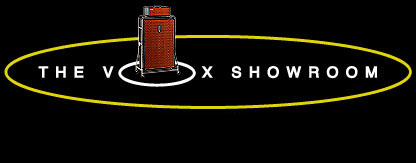
 Close-up of the "Block 7200" V303J Preamp Circuit Card
|
Under the orange lid of the organ, near the power supply, are two identical preamp printed circuit cards, called "Block 7200" on the V303J schematic. The preamp card closer to the front of the organ is connected to the upper keyboard, while the card closer to the keybed is connected to the lower keyboard. Each card has ten contact pins and is fastened to the organ with one screw.
The preamp board is comprised of two circuits. The first circuit of these circuits preamplifies the output from the fundamental and overtone drawbars before returning the signal to the input of the red "flute" (foundation) and "reed" drawbars.
The output of the foundation and reed drawbars are then fed into the second stage of the preamp. In this second stage of the preamp, a series of capacitors and resistors are used for "foundation" and "reed" tone shaping. Finally, the organ signal is passed through another stage of preamplification before heading to the output jack.
A circuit board style potentiometer allows the output level of each keyboard in the organ to be adjusted to avoid input overload distortion.
Diagnosis of preamp problems:
The Vox Showroom and North Coast Music accepts no responsibility for personal injury or damage to property while using this information to attempt an organ repair. Proceed at your own risk.
The two preamp boards are identical. If the entire lower keyboard seems to be malfunctioning, and the upper keyboard is working correctly, exchange the preamp boards. If the problem moves to the other keyboard, you know not only that a preamp board is at fault, you also know which preamp board is causing the problem.
What malfunctions on the preamp boards? The most likely culprits are the six electrolytic capacitors (the light gray cylindrically shaped devices) on each preamp board. Two of these are 100 uf (uf = micro farads) and four 10 uf, all rated at 15 volts. Electrolytic capacitors typically have a life expectancy of ten years, so forty plus years after their original installation on these circuit cards, these are the prime candidates for replacement.
The capacitors needed for this repair are commonly available at a Radio Shack or Tandy. The replacement capacitors will probably have a 50 volt rating, but that will not be a problem. Please observe the location of the + end of each capacitor and install the replacements the same way. The cost to replace all six capacitors will be around $5.
If changing these capacitors does not fix the problem, then one would next look at the two germanium transistors as the other part most likely to fail. A shot of "freeze spray" or "component cooler" (again available at Radio Shack for about $10) on each transistor should reveal which of the two transistors is bad. Either may be replaced with an NTE 102A transistor.
|

